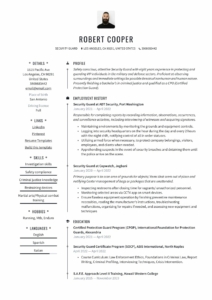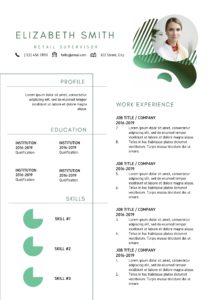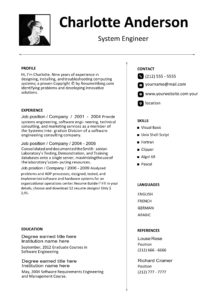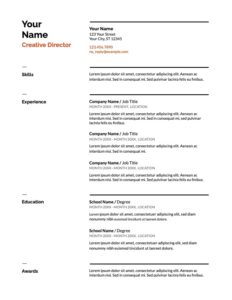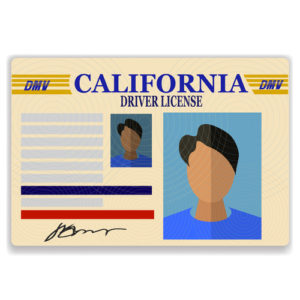
A variety of job openings may include a driver's license as a requirement of the position or as a desirable skill.
Now you may wonder how to include your license details on your resume. Below, we explain in detail when a driver's license on a resume may be relevant, and show you examples of how to state your driver's license on your resume correctly.
What you can read in this article
When to state it?
What is the purpose of putting it on your resume? Generally, If it is a requirement or a specialized type, list it.
A driver's license can, however, demonstrate to potential employers that you have a reliable form of transportation, which can be crucial for jobs that require travel or commuting. In this regard, it will never hurt to list it under your Skills section, or your personal details section.
A job opening might be in a remote place, with limited or non-existing public transport. Then, showing that you can get to work, is worth noting by stating your license.
If it's neither crucial, required nor desired to have a driver's license, you could choose to keep it out. It's up to you.
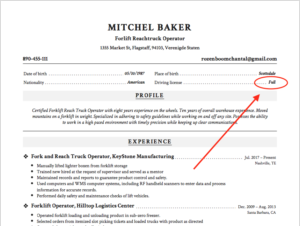
Where to state a Driver's License on your Resume?

Your driver’s license shouldn’t be what the hiring manager sees first in your resume (except if you are applying for a driving job). Information about driver’s licenses would appear under “Skills” but also perfectly fits under an optional resume section “Licenses and Certifications”. In the example below, it's been listed under the personal details section, which is also acceptable.
Mention the Type of License
There are different types of driver's licenses, and it is essential to specify which type of license you hold.
For example, you may have a standard driver's license (Full) or a commercial driver's license (CDL). Mentioning the type of license will help the employer determine whether you meet the requirements of the position.
Examples for the Skills Section:
United States
One bullet point would be “Valid (whatever State you are in) Driver's license”. If you wanted to add to it, you could say, “With a clean driving record” (assuming that is true). If it requires a specific class of license, you can add that as well, (“Valid CA Class IV Driver’s License, with a clean DMV record”)
United Kingdom
- A – motorcycles
- B – cars with a maximum permissible weight of 3,500 kg
- BE – cars with a trailer not exceeding 3,500 kg
- W — work vehicles
- C — trucks and caravans
- CE — trucks and caravans with trailers
- D — minibusses with no more than 16 passenger seats
- DE —mini buses with trailers
- D1 — buses with more than 8 passenger seats
- D1E — buses with trailers
For more information on the different license categories in the UK, visit GOV.UK.
General Types of Driver's Licenses:
| Type of License | Description | Endorsements | Vehicles Allowed | Restrictions |
|---|---|---|---|---|
| Standard Driver's License | This is the most common type of driver's license and allows you to operate non-commercial vehicles, such as cars, trucks, and vans. | N/A | Cars, trucks, vans | N/A |
| Commercial Driver's License (CDL) | A CDL is required to operate commercial vehicles, such as buses, tractor-trailers, and delivery trucks. There are three classes of CDLs, depending on the type of vehicle you will be driving. | Varies depending on the state and type of CDL. Examples include Hazmat, Passenger, and Tanker endorsements. | Buses, tractor-trailers, delivery trucks, etc. | CDL holders may be subject to certain restrictions, such as driving only during daylight hours or carrying a limited number of passengers. |
| Motorcycle License | A motorcycle license is required to operate motorcycles and other two-wheeled vehicles. | N/A | Motorcycles, mopeds, etc. | Some states may have age or experience requirements for obtaining a motorcycle license. |
| Learner's Permit | A learner's permit is a restricted license that allows new drivers to practice driving under the supervision of a licensed driver. | N/A | Varies depending on the state, but typically allows the permit holder to drive a non-commercial vehicle with a licensed driver present. | Permit holders may be subject to certain restrictions, such as driving only during daylight hours or not being allowed to drive on highways. |
Professional Drivers
As a professional driver, you should list your driver's license under the “Licenses and Certifications” section of your resume. This section is typically found towards the end of the resume and can also include any other licenses or certifications that you have earned.
See our resume examples: Delivery Driver Resume & Truck Driver Resume
For those applying for a driving job, your safety record and years of driving experience are required. They should appear earlier on your resume, since such information significantly influences hiring decisions for such jobs. (for example, in your Profile Summary)
Ensure you are familiar with the categories of licenses and what kind of license makes you eligible to drive what kind of car. This puts you on the same page with your prospective employer, and you can be sure you are eligible for the job you are applying.
Mention Any Additional Endorsements
If you have any additional endorsements on your driver's license, such as a hazardous materials (HAZMAT) endorsement or a passenger endorsement, you should mention them on your resume. These endorsements can demonstrate your ability to operate certain vehicles or transport specific materials, which may be relevant to the position.
Example for “Licenses and Certifications” Section:
- Driver's License: Commercial Driver's License (CDL), License No. 1234567, Expiration Date: 12/31/2024
- Endorsements: Hazmat and Passenger
What not to state
You should be careful about adding extra information to your resume as a voluminous resume could put off hiring managers. Be cautious about including sensitive information. Your driver’s license number is one such sensitive piece of information. Your identity could easily be stolen if such information is revealed, and you never know where your resume is going.
Also, the expiration date is a sensitive piece of information that you should be careful with sharing.
Other sensitive information you should leave out of your resume. For security reasons, never include your social security number or credit card information.
Summarily
Remember only to state your driver's license if it is relevant to the job you are applying for. When stating your license information, never write your license number on your resume. Your prospective employer should contact you if such information is necessary. The same goes for stating references, where you do not state the names of the referee.
